When we first embarked on this trip, we weren’t sure how much time we would spend in Turkey. We initially thought Istanbul might be our final stop, but a variety of factors came together that ultimately led to us spending four weeks in this gorgeous and fascinating country. So let’s start at the beginning…
We said goodbye to our new friends at the motocamp in Bulgaria and made our way to the busiest border crossing in all of Europe: the Kapıkule crossing between Bulgaria and Turkey. It was our longest and most thorough border crossing yet, but we made it through in about an hour with no issues. With the daylight hours getting shorter and shorter, we decided to stop in a city a couple of hours over the border rather than try to race the sunset in crazy Istanbul traffic.


After a good night’s rest, we were ready for whatever our entry into Istanbul had in store. Luckily, it was a Sunday afternoon and the traffic was not nearly as bad as we were anticipating. We encountered some pretty heavy rain but made it to our hotel in the old town with only tired clutch hands and a few curse words mumbled into our helmets. After changing out of our wet riding gear, the rain let up and we set out to explore the old town on foot. We had lunch and enjoyed some delicious Turkish tea and baklava (the standard finish to every meal in Turkey), before taking in some of the surrounding sights.





Istanbul is a massive city that straddles two continents. It has a population of over 15 million people and it is divided into a European side and an Asian side via the Bosphorus Strait. The city was founded in the 7th century BCE and is rich in history and culture. We spent our first evening admiring the beautiful architecture and meandering through the chaotic and vibrant city streets.


We finished the day off by having a drink and exchanging travel stories with our hotel owner Hakan, who is a fellow motorcycle rider.
The next morning we got our first glimpse of Asia from the roof of our hotel.

Before crossing into Asia, however, there was so much to explore on the European side of the city. Our first stop was The Grand Bazaar, one of the oldest and largest covered markets in the world. After finding our way to the market through a crazy rainstorm, we were immersed in a sea of sights, sounds, and people. It was easy to get lost in the hustle and bustle of the market as we perused the shops full of colorful fabrics, jewelry, and beautiful artwork and antiques.




We eventually found our way out of the maze of shops and then continued along the cobblestone streets of the old town to the famous Spice Bazaar. As its name suggests, the bazaar is full of every spice imaginable - along with a variety of nuts and sweets. It was interesting to see (and smell) the array of spices as we made our way past the colorful stalls.


After a quick lunch, our next stop was the famous Blue Mosque. Built in the early 1600s and a classic example of Ottoman architecture, the Blue Mosque gets its name from the over 20,000 handmade ceramic blue tiles that decorate its interior. We spent some time admiring the majestic inner courtyard before venturing inside where stained glass windows and large chandeliers illuminated the intricate details in the ceiling and walls.





Outside the mosque, a group of older Turkish women approached Brian and began asking him something in Turkish. When his only reply was “English?” they looked seriously befuddled and walked away. This type of encounter became rather common over the next few weeks as we learned that Brian can easily pass for a local. Unfortunately, the same cannot be said for me as was evident when trying to bargain in the Grand Bazaar.
After getting our fill of the markets, we decided to head underground to explore the Basilica Cistern, the largest of several hundred ancient cisterns that lie beneath Istanbul. The reflection of the columns in the illuminated water made for a unique experience.





We tried Turkish dumplings, called Manti, for dinner before heading to our last stop for the day: the Hagia Sophia. We spent some time inside admiring the architectural feat of this 1,485-year-old building that has undergone numerous transformations over the years but has remained an iconic and sacred site in Istanbul.



The next morning we walked up to the Bosphorus, stopping to visit the New Mosque located on the water’s edge before hopping on a boat tour of the Bosphorus Strait. The boat tour allowed us to really appreciate just how expansive Istanbul is.








Once we were back on dry land, we walked across the Galata Bridge to one of the most popular streets in all of Istanbul: İstiklal Street. This bustling pedestrian thoroughfare is full of shops, restaurants, and cafes. We window shopped and people watched as we made our way down to Taksim Square, the city center of modern Istanbul. On the long walk back to our hotel, we stopped to get dinner at the Anthony Bourdain famous doner kebab restaurant Dürümzade. Brian had actually eaten here seven years ago during his first time in Istanbul and although it was good, it sadly did not live up to the memory.








The next day we visited the Topkapı Palace, which served as the administrative center of the Ottoman Empire and main residence of its sultans from the 1460s to 1856. It is now a museum full of interesting history and sacred relics. We learned all about the history on the free audio tour as we walked around the expansive grounds.






^ This is believed to be St. John the Baptist's arm

Unfortunately, it felt as if every tourist in Istanbul decided to visit the palace on the same day so after a few hours we left to escape the chaos. We spent the rest of the evening running some errands and relaxing.
The next day, Brian went to the Archeological Museum, the Bank Museum, and the Turkish and Islamic Arts Museum while I opted to work out and have a relaxing afternoon. While we are alike in many ways, our tolerance and enjoyment of museums is one area where we differ. If there was a museum-visiting marathon, I’m pretty sure Brian would win. In between museums, we met for lunch with a view of the Hagia Sophia.




After a busy four days, it was time to leave Istanbul and cross into Asia! We encountered a lot of traffic on our ride out of the city, but thankfully it still was not as bad as we were expecting. We passed through a tunnel under the Bosphorus into Asia and took mostly highway all the way to our guesthouse in Safranbolu, a beautiful small town that was a recommended stopping point on our way to the Black Sea. I had chosen a cheap hotel slightly outside of town because Google showed that the walk to the old town was “mostly flat.” As we hiked a comically steep road for 20 minutes, I was reminded why we never trust Google. Though steep, our walk into town was beautiful and we managed to find Turkish pierogies for dinner before making the steep and dark ascent back up to our hotel.






The next morning we rode the rest of the way to the coast and got our first views of the Black Sea. We continued along the twisty and beautiful coastal road through Amasra and east to Inebolu before turning south again. We stopped for the day in a town called Kastamonu and enjoyed some delicious Turkish-style pizzas.






The following day we rode through golden rolling hills on the highway to the town of Göreme in Cappadocia. At our lunch stop, we met some friendly Turkish riders. We didn’t take many pictures that day, but the sunlight on the surrounding countryside was magical and we arrived in Göreme just as the sun was setting.



Along with an otherwordly landscape, Cappadocia is known for the hundreds of hot air balloons that can be seen floating through the sky every morning. Neither Brian nor I had ever been in a hot air balloon. While we typically skip the super touristy attractions most places we go, this one felt like it might be worth it, so we spent the next day shopping around town for a balloon company. Once we had booked our tickets for the following morning, we walked to the Göreme Open Air Museum - an outdoor museum that is home to some of the best-preserved examples of Byzantine rock-cut architecture and frescoes in the world. The buildings and artwork date back to the 10th, 11th, and 12th centuries. Unfortunately, the hours of the museum had changed for the off-season and we arrived just as they were closing. Luckily, the area surrounding the museum is still full of unique rock structures and dwellings so we spent some time exploring the trails at golden hour.








We awoke at 4:30 am the next morning to join the sleepy caravan of other travelers headed to the balloons. It was a mesmerizing experience watching the dark sky illuminate with the glow of the inflating balloons. We hopped into the basket of our balloon just as twilight began unveiling the surrounding landscape with a cascade of morning colors.








It felt surreal to be amongst the dance of hundreds of balloons in the sky, and it was a truly spectacular sight to see. We were captivated by the scenery as we floated through the air for an hour before the pilots of our balloon impressively landed us directly onto the trailer of the Jeep. It then became a fun and hilarious joint effort as we all helped to collapse the balloon to get packed up.


Feeling slightly sleep-deprived, we went back to our hotel and relaxed for a while before heading out to hike in the fairytale landscape of Red and Rose Valleys. We made our way through the unique red and pink rock formations, taking time to explore some of the many ancient churches and dwellings carved into the soft volcanic rock.











I had been feeling slightly unwell for the last few days and unfortunately that evening I became terribly sick. We ended up extending our stay a few extra days so I could recover. During that time we enjoyed watching the morning balloons float through town from the comfort of our hotel balcony and Brian went for a gorgeous sunset ride.



Although I was still feeling sick, on our last full day we awoke early to ride the motorcycles through the balloons. Despite having seen the balloons multiple times already, this was an incredibly cool and special experience. Below are a few of the MANY shots we took that morning (because for us there is no such thing as too many balloon photos).





After watching the sunrise, we rode to one of Turkey’s many ancient underground cities. In Cappadocia alone there are around 200 underground cities that were built as a means of protection from invaders. We decided to visit the Kaymakli underground city. As we made our way through the narrow, claustrophobia-inducing tunnels between rooms and floors it was interesting to imagine what life was like for the people that lived here.

^ I masked up to avoid getting anyone else sick

We pushed on for one more stop that day to visit the off-the-beaten-path Soğanlı Valley. Here, we were able to explore more ancient rock-cut dwellings and churches with almost no one else around.





After a busy day of exploring while still not feeling great, we spent the evening just relaxing in the hotel. When we left Göreme we had planned to ride a nearby off-road section that was supposed to be fantastic, but given that I still was not feeling well we sadly decided to skip it. Instead, we headed southwest to the city of Konya. On our way out of town, we stopped to visit one of the other famous valleys in Cappadocia - Love Valley. I think the below photo will give you an idea as to where it got its name.

While stopping to take some photos we ran into a couple from Colorado. Oddly enough, these were the 7th and 8th people we met during our stay in Göreme who were from Colorado. Up until this point, we hadn't met many Americans on our trip, let alone Coloradans. Apparently, Cappadocia is a magnet for Coloradans and we can definitely see why!
We continued riding and made our way down the winding roads near the Ilhara Valley. We stopped for lunch in the town of the same name and had what ended up being our favorite meal in Turkey. It was a family-run restaurant and our waiter was an adorable young man who couldn’t have been more than 10 years old.

After lunch, we continued riding through the beautiful golden hills surrounding Mount Hasan, an inactive volcano in the region.


While riding we came across a very malnourished-looking puppy. Although Turkey is full of stray cats and dogs, most locals seem to take good care of them as animal food and water can often be found outside of shops, houses, and restaurants. This particular puppy, however, was on a road in the middle of nowhere. Thankfully, I had been carrying around some pet food in my tank bag for an occasion just like this and we were able to give him some food and water. Unfortunately, puppies and motorcycles don’t really go together so we can only hope someone else found him and took him in.
Our next stop was the 13th-century Sultanhani Caravanserai, which was one of the largest trading posts on the Silk Road. We walked through the interior but actually ended up spending more time outside its grand entrance as it is a very popular tour bus stop and we had many conversations with other tourists who were curious about our Colorado license plates.


Back on the road, we made it the rest of the way to the city of Konya, one of the biggest pilgrimage cities in Turkey and home to one of the most traditional whirling dervish ceremonies. The whirling dervish ceremony is a spiritual dancing ceremony rooted in religion, but religious or not it is an impressive sight to see as you watch over 30 men spin in unison (and somehow not run into each other or throw up). Our consolation for missing the off-road section that day and arriving in Konya a day earlier than planned was that every Saturday the cultural center in town hosts a whirling dervish ceremony for tourists and locals alike and we were able to observe this trance-like spinning spectacle.


After the ceremony, we walked around the city and had some of Konya’s famous Etli Ekmek (a bread with meat dish) and my personal favorite kuru fasulye (a bean stew).


The next morning while leaving town we accidentally found ourselves riding down a marathon race course as all of the streets were blocked off and our hotel staff and the numerous police officers we passed failed to tell us. Luckily, no runners were on the road at that time, but we did have a good laugh as we rode across the finish line to a round of applause from the spectators.
Once we found our way out of the marathon, we continued riding to the town of Beyşehir where we stopped to admire the Beyşehir Lake and get some lunch.

Soon after, we encountered some crazy strong wind and found ourselves in the middle of a huge rainstorm. We continued riding through the rain until it eventually let up giving us these views:


We passed by some beautiful fall colors before riding around the gorgeous Eğirdir Lake which reminded us of Patagonia. Despite the on-and-off rain storms, this was a great day of riding.





We stayed at a hotel on the small peninsula that juts out into the center of the lake. That evening, as another storm rolled over the water, we saw one of the most striking sunsets I have ever seen. It looked apocalyptic watching the clashing of bright colors against the rain. As the sky transformed to a glowing ember we flew the drone to take in the scenery from above.


The following morning we got our last views of the lake before hopping on the D685 south toward the coast.

This would soon become our favorite day of riding in Turkey as we wound our way through more Patagonia-like landscapes around the Karacaören Lake.


We stopped for lunch in the popular beach town of Antalya, paying a visit to Hadrian’s Gate and cruising along the beachfront lined with towering peaks.


We really liked the vibe of Antalya, but we had our sights set on a smaller coastal town to spend a few days so we pushed on. We picked up the D400 road and wound our way along the stunning coastline all the way to the town of Kaş. After a gorgeous sunset that evening, we spent the following day exploring the cute downtown area, visiting the ancient amphitheater just outside of town, and relaxing on nearby Belediyesi Beach.












The next day would come to be known as the one with the fall. After leaving Kaş, we continued along the coast for a bit before turning north toward Pamukkale, a town with famous thermal springs and an ancient city we were keen to visit. Aside from getting pulled over for one of Turkey’s ubiquitous random traffic stops to check our documents, all was going well and we were enjoying the sweeping turns through the mountains. Just before taking a turn, Brian and I both looked out at a pretty view of the scenery. I looked back to take the turn and before I knew it Brian was sliding on the ground in front of me slowly spinning as his bike pushed him forward. He slid for about 10 ft before coming to a stop in the middle passing lane. Thankfully, no other cars were around and Brian’s hard side case prevented his bike from sliding on top of him. He stood up unscathed and rushed to stop any oncoming traffic from hitting his bike that was lying in the lane while I rushed to get off my bike to help and make sure he was okay. We quickly lifted his bike up and then I stopped traffic while he coasted his bike to the shoulder to assess for any damage. It turned out that there was a massive strip of oil in the turn that neither of us saw in time. We are usually very cognizant of discolorations in the road for this very reason, but we missed this one and it was clearly very fresh (as was evident when we heard a car almost spin out on it soon after we got off the road). When it comes to falls, however, this was a best-case scenario and it was a great reminder as to why we always wear riding gear.


Miraculously, along with Brian being uninjured, his bike appeared to be without any major damage. He was missing a right mirror and his side pannier had some pretty gnarly scratches, but everything else was fine. Relieved and grateful, we rode the rest of the way to Pamukkale.

The next morning we awoke early to explore Hierapolis, an ancient city that was built right next to the thermal hot springs in Pamukkale. We started at the opposite end of the city from where the tour buses drop off, so for the first half of the day we had the ruins all to ourselves as we walked along the cobblestones of this once thriving city.






The Roman theater with its partially restored and well-preserved frieze was by far the most impressive thing we saw. We spent some time sitting in the amphitheater and imagining what it would have been like to see a performance here in the 2nd century AD.


After taking in the ruins, it was time to visit the thermal springs. I had seen photos of the cascading bright blue and aquamarine pools before, but despite most of the pools being dried up from the changing of the seasons, it was still more stunning than I imagined. “Pamukkale” means cotton castle in Turkish and it is easy to see where these travertine pools got their name (although don’t let the name fool you - shoes are not allowed and the stone is far from cotton).



We were eager to see the pools at sunset, so we spent the rest of the afternoon relaxing in the cafe. When the sun began descending toward the horizon, we walked back to the springs and watched in awe as the sky transformed the landscape.










The following day we rode back to the coast and stayed in a small town called Datça. We spent that evening and the next day walking around the charming downtown, running errands, and doing some planning for the upcoming weeks.







To save some time and backtracking, the next morning we hopped on an early ferry from Datça to a town further up the coast called Bodrum. Bodrum is home to an ancient mausoleum that is considered one of the Seven Wonders of the Ancient World. Unfortunately, massive earthquakes during the 12th to 15th centuries reduced the mausoleum to mostly rubble, but it was still interesting to see the ruins alongside models of what this 150-foot structure once looked like.


After visiting the mausoleum and grabbing some lunch, we continued riding north along some fantastic and empty twisty roads to the town of Selçuk. About 30 minutes from town, Brian noticed a funny sound coming from his bike. We pulled over but were unable to diagnose the problem so we rode the rest of the way to our hotel.
Selçuk is located right next to another famous ancient city called Ephesus. Ephesus was a port city that was once the trading center of the ancient world. The city was famous in its day for a theater capable of holding 24,000 spectators, the Library of Celsus, and the Temple of Artemis, which is another one of the Seven Wonders of the Ancient World. Like the mausoleum in Bodrum, sadly very little of the temple is left to see today.
The next morning we spent a few hours exploring these famous ancient sites under gorgeous blue skies and sunshine.







After the ruins, Brian went to visit the Ephesus Archaeological Museum in town while I ran some errands. While I was parking my bike, I met a British guy named Tom who is also traveling on a Honda CB500x. We got to chatting and it turns out we had actually passed each other on the road a few days back. Although there are a lot of motorcycles in Turkey, during our month in the country we did not see many other international riders so whenever we passed a foreign license plate it always stuck out. After Brian finished at the museum, we all got drinks and had a fun night chatting about our travels.

We decided to extend our stay in Selçuk an extra night and spent the next day relaxing and troubleshooting Brian’s bike noise. It turned out that the official Triumph shop in Skopje, North Macedonia where Brian had a new drive chain installed forgot to put on an essential piece that holds the front sprocket nut in place. Over time, the nut had fallen off and the sound he heard was the sprocket rubbing against the plastic cover. Luckily, the plastic cover seemed to have held it in place so it didn’t completely back out. Extra luckily, when Brian went to town to try and source a replacement for this very specific part he met Menis, a local guy who spent over an hour helping him translate and find a machinist who was able to refabricate a piece with a lathe so that it would work for his bike.

^A perfect example of why everyone thinks Brian is Turkish
With Brian’s bike fixed, we rode north toward the town of Bergama the following day. We took some windy backroads and enjoyed our last day riding in the Turkish countryside.


Bergama was a good middle point on the way to our final stop in Turkey and it also happens to be located right next to the ancient city of Pergamon. I was a little ruin'ed out, but the next morning Brian went to explore them. He made a friend along the way whom he offered a ride up the mountain.




After exploring the ruins, we both took the 550 highway up to the port city of Çanakkale. Çanakkale is located right next to the Gallipoli Peninsula where a significant World War One campaign took place. The next morning Brian took the ferry over to the peninsula and spent the day riding some incredible roads and visiting the various historical sights.



While Brian visited Gallipoli, I enjoyed exploring the lively coastal city and worked on catching up on the blog.




The following day, we headed for our next and final new country on this motorcycle portion of the trip: Greece!

Cheers,
Brian and Erin


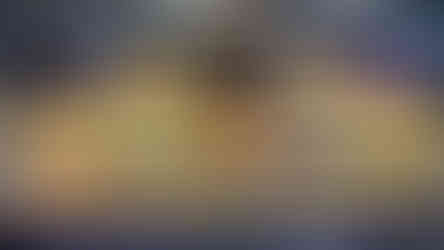





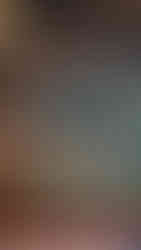





































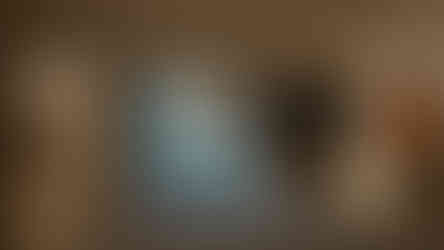

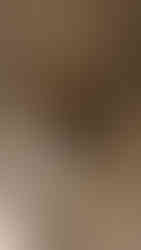


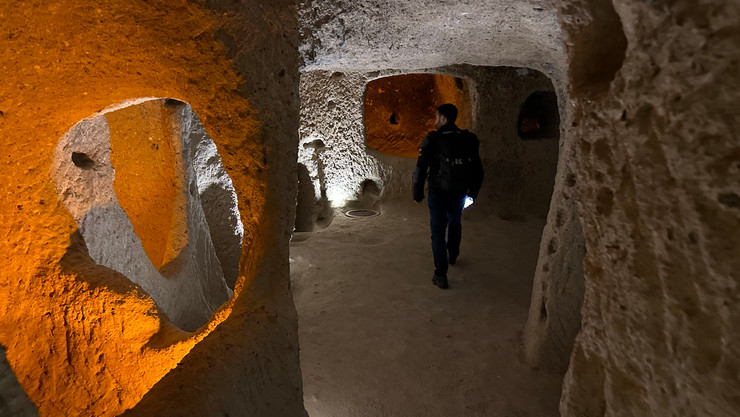



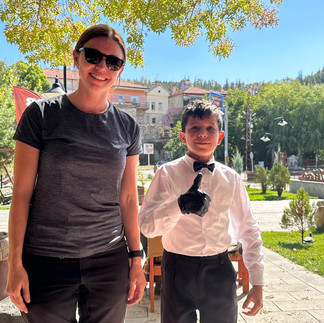

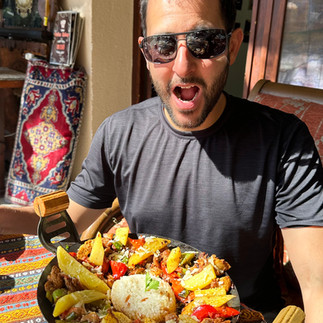


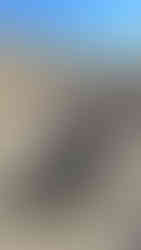





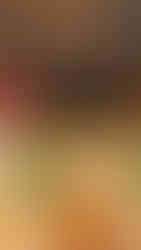




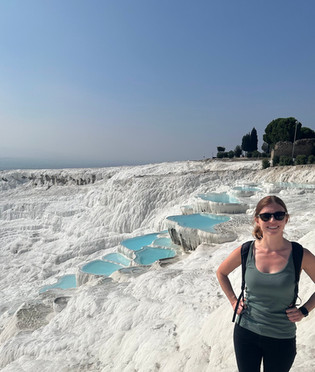
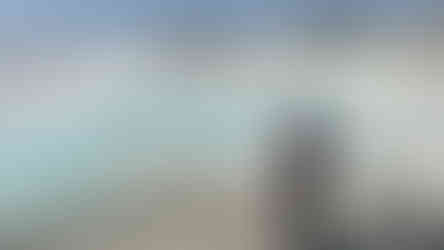













Comentários